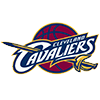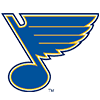Tiering is one of the most popular ways to prepare for a Fantasy basketball draft. Within each position group, separating players into tiers is an effective means of projecting general value and keeping organized during your draft. If you're in a position where you need to make a quick decision, consulting a set of tiers can help settle the debate between two players who are relatively close in value.
Entering the 2021-22 season, the NBA's talent pool is once again incredibly deep, so going into your drafts with a plan is more imperative than ever. Early on, drafting the top talents should be the priority, but as the draft progresses, it's important to be cognizant of which positions you're stocking up on and which you'll need to target in the mid-to-late rounds. Tiers can help achieve the roster balance most fantasy managers are hoping to come away with.
Here are our point guard tiers, which can serve as a general guide for those playing in standard leagues.
Tiers assume eight-category settings. Each player only appears in one set of tiers. Players are assigned to the position at which they're likely to play the most.
TIER 1
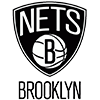 James Harden, Nets
James Harden, Nets
For the first time in Harden's career, injuries took a major toll on his fantasy value, as he appeared in a career-low 44 of a possible 72 games. But even with a midseason move to Brooklyn that reshaped his stat profile, Harden finished the
Tiering is one of the most popular ways to prepare for a Fantasy basketball draft. Within each position group, separating players into tiers is an effective means of projecting general value and keeping organized during your draft. If you're in a position where you need to make a quick decision, consulting a set of tiers can help settle the debate between two players who are relatively close in value.
Entering the 2021-22 season, the NBA's talent pool is once again incredibly deep, so going into your drafts with a plan is more imperative than ever. Early on, drafting the top talents should be the priority, but as the draft progresses, it's important to be cognizant of which positions you're stocking up on and which you'll need to target in the mid-to-late rounds. Tiers can help achieve the roster balance most fantasy managers are hoping to come away with.
Here are our point guard tiers, which can serve as a general guide for those playing in standard leagues.
Tiers assume eight-category settings. Each player only appears in one set of tiers. Players are assigned to the position at which they're likely to play the most.
TIER 1
 James Harden, Nets
James Harden, Nets
For the first time in Harden's career, injuries took a major toll on his fantasy value, as he appeared in a career-low 44 of a possible 72 games. But even with a midseason move to Brooklyn that reshaped his stat profile, Harden finished the season as a top-three player on a per-game basis in eight-category leagues. Harden's usage rate took a hit playing next to Kyrie Irving and Kevin Durant -- he averaged nearly 10 fewer points per game compared to 2019-20 -- but he handed out 10.9 assists per game in a Nets uniform while adding 8.5 rebounds, 1.3 steals and 2.7 made three-pointers.
If all three of Brooklyn's stars can remain even relatively healthy this time around, there's a chance Harden's scoring could take another slight step back. But he remains arguably the highest-floor player in all of fantasy basketball, and his history suggests last season's injury issues were an anomaly.
 Stephen Curry, Warriors
Stephen Curry, Warriors
When it comes to Curry, durability concerns will always be in the back of fantasy managers' minds, but the 33-year-old's 2020-21 campaign firmly re-established him as the league's most dangerous offensive player. The Warriors should be able to offer the two-time MVP more help this season, so he may not be able to match last season's career-high 21.7 FGA/G, but Curry should once again threaten to break 30 points per game with elite efficiency from the field and at the line. Three-point shooting remains Curry's most valuable fantasy asset. Last season, he hit 1.2 more threes per game than the No. 2 three-point shooter (Damian Lillard).

 Damian Lillard, Trail Blazers
Damian Lillard, Trail Blazers
A first-round value in each of the last four seasons, Lillard's ceiling is just a tad lower than that of Harden or Curry, but he's been the most dependable of the bunch. Through nine years in the league, Lillard has never missed more than nine games, and he's been remarkably consistent as an overall offensive player. Over the last three seasons, Lillard and Harden are the only players in the league who've racked up at least 700 made threes, 1000 made free throws and 1,500 assists. There's a chance Lillard could eventually seek a trade out of Portland, but that shouldn't scare fantasy managers away from taking him inside the top 10.
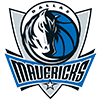 Luka Doncic, Mavericks
Luka Doncic, Mavericks
Coming off of a fantastic third season, the 22-year-old continues to chart his course toward potentially going down as one of the league's all-time greats. Doncic's 2020-21 season was close to a carbon copy of his sophomore campaign, though he took a step forward as a three-point shooter, hitting 35 percent of his 8.3 attempts per game after shooting just 31.6 percent in 2019-20. A 28-8-8 player who adds 1.0 steal per game, Doncic has very few holes in his profile. However, he's hit only 73.5 percent of his free throws since entering the league, including 73.0 percent last season. That's a damaging number for a player who ranked sixth in total attempts (471) last season.
TIER 2
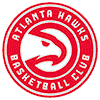 Trae Young, Hawks
Trae Young, Hawks
With more talent around him, the 22-year-old's fantasy value took a slight step back last season. But he still posted 25.3 points and 9.4 assists per game while ranking among the league's most valuable free throw shooters (88.6% FT; 8.7 FTA/G). A decline in three-point volume -- he took 3.2 fewer threes per game compared to 2019-20 -- was mostly to blame for Young falling out of the top 20 in eight-category leagues. His statistical profile isn't as complete as that of the guards in Tier 1, but Young remains a high-level fantasy contributor who adds major value in points, threes, free throws and assists to go with lower-end rebounds and steals production.
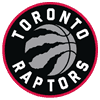 Fred VanVleet, Raptors
Fred VanVleet, Raptors
A top-25 player in each of the last two seasons, VanVleet combines strong scoring and assists numbers with elite contributions in three-pointers, steals and free throw percentage. His field goal percentage leaves plenty to be desired, but it's something fantasy managers can live with -- especially if VanVleet can make another leap forward with Kyle Lowry out of the picture.
 Kyrie Irving, Nets
Kyrie Irving, Nets
When healthy, Irving can be a top-10 player in fantasy basketball, but he's reached the point where he has to be penciled in for a minimum of 15 or 20 absences. Irving has missed at least 15 games in five of the last six seasons and 10 or more games in all but one of his 10 NBA campaigns. While he reached a new level of efficiency in 2020-21 (26.9 PPG, 50.6% FG, 40.2% 3PT, 92.2% FT), Irving simply has to be discounted on draft night.
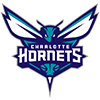 LaMelo Ball, Hornets
LaMelo Ball, Hornets
As a rookie last season, Ball quickly silenced the doubters and emerged as the top fantasy player in the 2020 class. He played only 28.8 minutes per game and dealt with a mid-season wrist injury, so there's plenty of reason to believe he could take a significant step forward in Year 2. Already a strong source of assists, steals and rebounds, the 20-year-old could rise even higher if he's able to improve his field goal (43.6% FG) and, especially, free throw percentages (75.8% FT).
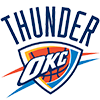 Shai Gilgeous-Alexander, Thunder
Shai Gilgeous-Alexander, Thunder
Injuries, as well as the Thunder's aggressive approach toward, let's call it draft-pick improvement, were the dominant narrative around Gilgeous-Alexander last season. He appeared in only 35 games, but he was a borderline-top-30 player (per-game value) and was easily on course for the best statistical season of his three-year NBA career. Oklahoma City is still a ways away from competing in the Western Conference, so the potential for tanking remains a concern, but Gilgeous-Alexander missed only two games through his first two seasons, so he's well-positioned for a bounceback fantasy campaign.
TIER 3
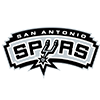 Dejounte Murray, Spurs
Dejounte Murray, Spurs
Murray has steadily improved each year since entering the league in 2016, and he could be set for a true breakout in 2021-22. After two-plus decades of consistent success, the Spurs will likely take a step back this season -- especially after losing DeMar DeRozan in free agency. That leaves Murray as the No. 1 scorer and playmaker for a team in need of a star presence. Outside shooting remains a concern for Murray, but he makes up for it with a solid field goal percentage and elite production in steals. Murray's ceiling may be higher than Tier 3, but much of the hype is speculative, so he ultimately falls short of Tier 2.

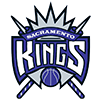 De'Aaron Fox, Kings
De'Aaron Fox, Kings
Fox took a step forward as a scorer last season, putting up a career-best 25.2 points per game on nearly 48 percent shooting. He's also an excellent source of assists and steals, but the 23-year-old needs to improve his free throw shooting if he's ever going to take the leap toward elite fantasy status. As a point guard who took more than seven per game, Fox was one of the league's biggest drains on the FT% category.
 Chris Paul, Suns
Chris Paul, Suns
Not long ago, Paul was on the short list of the league's most injury-prone players. But after missing just four total games over the last two seasons, fantasy managers have to take his late-career health renaissance seriously. At some point, the 36-year-old is going to hit a wall, but his combination of scoring, assists, rebounds, steals and elite percentages -- he fell just short of joining the 50/40/90 club last season -- is difficult to ignore.
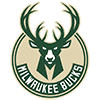 Jrue Holiday, Bucks
Jrue Holiday, Bucks
Holiday tends to be more valuable in real-life than fantasy, but he finished as a top-25 player on a per-game basis last season. A jack-of-all-trades guard who does virtually everything well, Holiday broke 50 percent from the field for the first time in his career last season, despite launching nearly five threes per game. Defensively, he may be the NBA's most dependable source of steals and blocks at the guard position. Dating back to his days in Philadelphia, Holiday has averaged at least 1.5 steals in 10 of the last 11 seasons.

 Russell Westbrook, Lakers
Russell Westbrook, Lakers
Joining his fourth team in as many seasons, Westbrook will be tasked with fitting in alongside not one but two superstars in LeBron James and Anthony Davis. It's difficult to imagine Westbrook averaging a triple-double for what would be the fifth time in his career, but at every stop he's proven he can still rack up points, rebounds, assists and steals at an elite level. Of course, Westbrook's horrendous three-point and free throw percentages render him significantly less valuable in category leagues than the counting stats would imply. And in leagues that value turnovers, Westbrook becomes even more damaging.
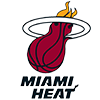 Kyle Lowry, Heat
Kyle Lowry, Heat
On a new team for the first time in nine years, expectations must be reset for Lowry. At age 35, he's yet to show signs of significant decline, but the Raptors put a lot of mileage on his tires, so it's fair to wonder if a drop-off is just around the corner. With that said, he'll play a key role for a Heat team with dark-horse title aspirations, so Lowry should still push for top-50 value if he can stay healthy.
 Ja Morant, Grizzlies
Ja Morant, Grizzlies
It took Morant a while to shake off an early season ankle sprain, but he essentially replicated his fantastic rookie season, albeit with slightly worse efficiency. Three-point shooting is the chief concern for Morant -- he hit just 30.3% of his attempts last season -- but he also fell to 72.8 percent at the free throw line. It feels like Morant is too talented for those figures not to improve, but there's a chance he could burn fantasy managers who reach for him a round or two early.
TIER 4
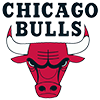 Lonzo Ball, Bulls
Lonzo Ball, Bulls
The move to Chicago places Ball on a more-talented roster that features three 20-point-per-game scorers, but Ball is plenty comfortable taking a backseat and focusing on facilitating. His scoring may regress after posting a career-high 14.6 points per game last season, but the rest of Ball's stat profile should be mostly sustainable. While he's always been a low-volume free throw shooter, Ball took a major step forward in terms of efficiency, jumping up to 78.1 percent after hitting just 48.7 percent of his attempts through his first three NBA seasons.
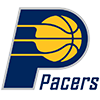 Malcolm Brogdon, Pacers
Malcolm Brogdon, Pacers
Brogdon reached new heights as a scorer last season (21.2 PPG) while remaining a steady source of assists, rebounds, three-pointers and steals. The 28-year-old doesn't have many weaknesses, but he's a near-lock to miss enough time due to injury that his fantasy stock has to be discounted. Brogdon's 16 missed games in 2020-21 extended his streak to four consecutive seasons with at least 15 absences.

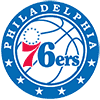 Ben Simmons, 76ers
Ben Simmons, 76ers
Simmons enters 2021-22 with as much potential variance as just about any player in the league. It's hard to imagine he plays out the season in Philadelphia, but training camp is fast approaching and there's been little movement -- at least publicly -- on finding a suitable trade partner. For fantasy purposes, a fresh start is probably best for the 25-year-old, who posted career-lows in points, rebounds and assists per game last season. No matter where he ends up, Simmons should continue to put up respectable, all-around counting stats, but he's a free-throw percentage killer (career 59.7%) who doesn't add any three-pointers.
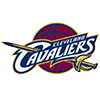 Darius Garland, Cavaliers
Darius Garland, Cavaliers
Coming off of an up-and-down rookie year, Garland quietly took a big step forward in Year 2, averaging 17.4 points, 6.1 assists, 1.2 steals and shooting 39.5 percent from three-point range. While the arrival of No. 3 overall pick Evan Mobley could steal some of Garland's spotlight, the 21-year-old will enter draft season as a popular breakout pick after finishing inside the top 80 last season.
TIER 5
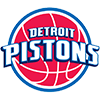 Cade Cunningham, Pistons
Cade Cunningham, Pistons
The 2021 rookie class will likely produce several viable fantasy contributors, but none have a higher floor than Cunningham. Stepping in as the cornerstone asset for a rebuilding team, the Pistons will happily entrust Cunningham with a heavy workload right away. Assuming he serves as the primary ball-handler, Cunningham should step in as one of the most well-rounded fantasy rookies in recent memory. Field goal percentage is probably the biggest concern, though Cunningham did drain 40 percent of his three-point attempts as a freshman at Oklahoma State.

 Mike Conley, Jazz
Mike Conley, Jazz
The veteran was a top-60 player on a per-game basis last season, but he was dogged by injuries for the second consecutive season. Having missed 20-plus games in three of the last four seasons, Conley should benefit from the return to a normal schedule. However, conservative fantasy managers may want to consider staying away.
 D'Angelo Russell, Timberwolves
D'Angelo Russell, Timberwolves
Injuries have kept Russell under 50 games played in three of the last four seasons, but even on a per-game basis he finished outside of the top-100 in 2020-21. The former No. 2 overall pick remains a strong source of points, assists and threes, but he's not a great free throw shooter (76.5% FT last season), and his field goal percentage rests in the low-40s. Surrounded by three high-usage players in Malik Beasley, Anthony Edwards and Karl-Anthony Towns, Russell's window to a bounceback season isn't exactly wide open.
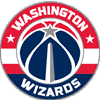 Spencer Dinwiddie, Wizards
Spencer Dinwiddie, Wizards
Back in action after a torn ACL limited him to just three games last season, Dinwiddie finds himself in a much better fantasy situation with the Wizards. Essentially stepping into the role vacated by Russell Westbrook, Dinwiddie will function as the No. 2 option behind Bradley Beal. Washington has more surrounding depth than in years past, but Dinwiddie should see enough minutes that he could replicate his 2019-20 production (20.6 PPG, 6.8 APG, 1.9 3PM/G).
TIER 6
 Devonte' Graham, Pelicans
Devonte' Graham, Pelicans
There's a good chance Graham and Nickeil Alexander-Walker start together in the Pelicans' backcourt, and while both are capable of running the point, Graham fits the more-traditional point guard profile. Injuries took a toll on the 26-year-old last season, and he struggled to find a consistent role after the emergence of LaMelo Ball, but he's just two years removed from putting up 18.2 points, 7.5 assists, 1.0 steal and 3.5 made threes per game. While his field goal percentage is a glaring negative, Graham's high-volume three-point shooting preserves his value in standard leagues.
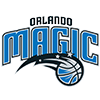 Jalen Suggs, Magic
Jalen Suggs, Magic
The No. 5 overall pick in the 2021 Draft enters an excellent fantasy situation in Orlando. The Magic will be a bottom-feeder in the East, but Suggs should step into a starting role right away as the best young asset on a rebuilding team. Markelle Fultz remains without a clear timetable after tearing his ACL in early January, and Suggs' ability to play both guard spots gives him a leg up on last year's first-round pick, Cole Anthony. Like most young guards, Suggs could struggle to score efficiently, but his overall stat floor is as high as any rookie not named Cade Cunningham.
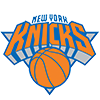 Kemba Walker, Knicks
Kemba Walker, Knicks
A few years ago, Walker was considered one of the safest and most durable players in fantasy basketball, but his recent knee problems have robbed him of that title. After missing 16 games in 2019-20 and 29 games last season, Walker is a difficult player to confidently start in weekly lineup leagues. Between Derrick Rose, Immanuel Quickley and RJ Barrett, the Knicks have plenty of depth at point guard, so Walker will likely have his workload closely managed throughout the regular season.
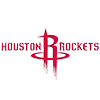 John Wall, Rockets
John Wall, Rockets
In his return from a nearly two-year absence last season, Wall struggled to score efficiently, but he still topped 20 points per game and added 6.9 assists through his 40 appearances. When active, he can still be a productive fantasy player, but given his injury history it's difficult to justify spending anything but a later-round pick on the soon-to-be-30-year-old, who finished just inside the top 100 in eight-category leagues (per-game value).

















